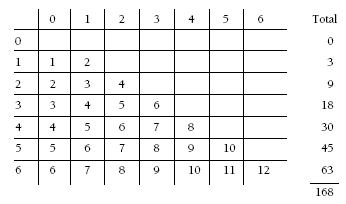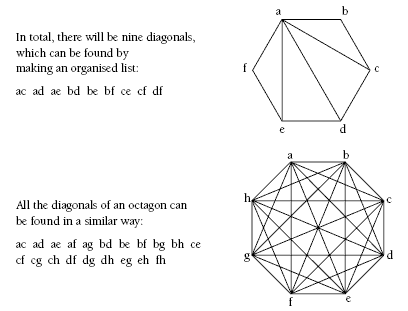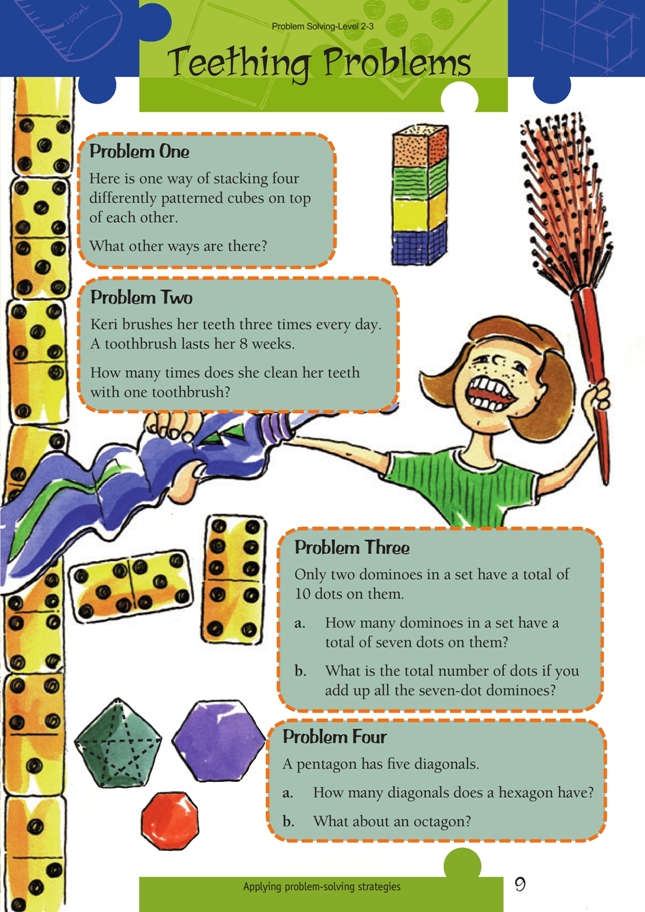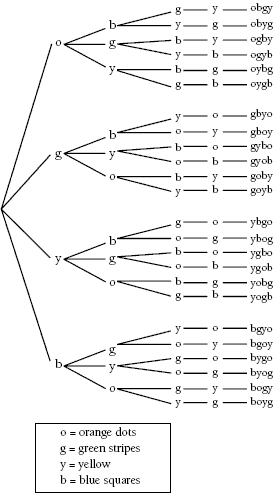These are level 3 number, geometry, and statistics problems from the Figure It Out series.
A PDF of the student activity is included.
Click on the image to enlarge it. Click again to close. Download PDF (300 KB)
find outcomes (Problem 1)
solve problems using multiplication (Problem 2)
solve problems using addition (Problem 3)
find diagonal lines in 2 dimensional shapes (Problem 4)
Problem One
This is another combination problem like the bus stop line problem on page 6. A tree diagram is one way to find all the ways of stacking the cubes (see the Answers section).
The diagram can be expressed as 4 x 3 x 2 x 1 = 24. (This is known as “four factorial” and is written as 4!.)
Problem Two
Students may need help to identify the important information in the problem.
Bridging questions include “How many days are in a week?” and “How can we find out the number of days in 8 weeks?”.
3 x 7 = 21 gives the number of brushes per week.
21 x 8 = 168 gives the number of brushes in total.
Problem Three
Some students may need to solve the problem by sorting through a set of dominoes. They will need to realise that the smallest number on one section of a domino is zero and the largest number is six.
To find the total number of dots on the three seven-dot dominoes, students should calculate either 7 + 7 + 7 = 21 or 3 x 7 = 21. Highlight the connection between repeated addition and multiplication. Extend the problem by posing similar questions, such as “What is the total number of dots showing on all the dominoes that have a total of six dots?”
Therefore, the total number of dots is 4 x 6 = 24.
A difficult problem for more able students is to work out the total number of dots on a full set of dominoes (168 dots).
The following table is one way of working this out.

Problem Four
The definition of a diagonal will need clarification. In this problem, diagonals join a corner with every other non-adjacent corner.
For example, in this hexagon, there are three diagonals involving corner a.

Answers to Problems
1. There are 24 different ways altogether. Note: ogyb is shown in the illustration for this question in the students’ booklet.
2. 168
3. a. 3 dominoes:
b. 21 dots
4. a. hexagon: 9
b. octagon: 20


